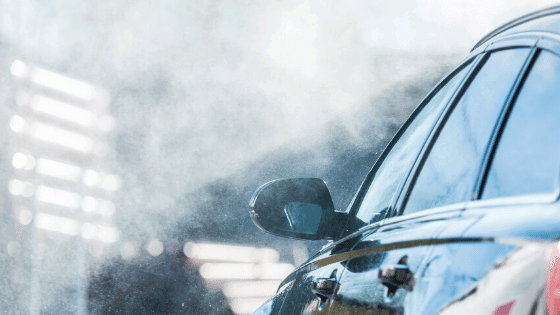- Our Mission: To provide the highest level of service and quality collision repair in an honest, ethical, and efficient manner. | Contact Us:
- 626-457-9114
- [email protected]

When is Your Car Considered a Total Loss and Beyond Repairs?
August 6, 2019
How Much Time Do I Have to Repair My Car After an Accident?
September 25, 2019For the average person, a body shop’s repair estimate may look like a collection of acronyms and numbers that don’t make sense. And while you’re required to receive a copy, it’s not very helpful if you don’t understand what’s going on.
To clear this up, we will go over some standard terms and other items you’re likely to encounter on your written estimate. Knowing this information will help you better understand the scope of your car’s damages and the cost to repair them.
The Top Section of Your Estimate: Basic Identifying Information
The first section on your estimate most likely contains essential information such as:
- Your name.
- Your address and phone number.
- Your car’s information.
- Your insurance company’s data, such as your claim number and the name of your adjuster.
There may be other information as well, such as your deductible amount and date of your accident.
This section is usually pretty straightforward and easy to understand.
The Middle Section of your Estimate: Line Items and Descriptions
The second part is where things can get complicated. Repair estimates are usually broken down by “line item,” which is a numerical list that describes every damaged component in detail.
Next, to each item, you’re likely to see a description, numbers, and acronyms. Some may make sense to you while others will have you scratching your head. Let’s take a look at what some of these mean.
Common Body Shop Acronyms and their Meanings
A/M – This refers to ‘aftermarket.’ In automotive terms, ‘aftermarket’ means replacing a part made by another manufacturer. At times, this may be necessary as a part from the original manufacturer may not be available.
B% – Stands for ‘betterment.’ Betterment refers to the percentage an insurance company will pay after deducting for the part’s wear and tear, or depreciation. For example, if your car had tires that were two years old, your insurance may apply betterment for the replacement of new tires.
DED – Acronym for ‘deductible.’
DRP – Stands for Direct Repair Program. DRPs’ are body shops that are part of an insurance company’s network. This is the body shop your insurance company may recommend you use for repairs. However, you’re not required to choose them.
FEA – Acronym for ‘front end alignment.’ If your car’s damage includes misaligned wheels, you may need front end alignment. You may see the acronym FWA, which means ‘front wheel alignment,’ or 4WA, which refers to alignment for all four wheels.
LKQ – This stands for ‘Like-Kind-Quality.’ This term means that an insurance company will replace a part with a similar quality part.
In some cases, replacing a part manufactured by the same brand, may not be possible. The insurance company may approve the use of a comparable part. LKQ usually refers to used parts from salvaged or non-operational vehicles that have a part of the same quality and in the same pre-accident condition.
LT – Refers to the left side of a vehicle.
OEM – This is an acronym for Original Equipment Manufacturer. You’re likely to see this on an estimate as “OEM parts.” For instance, if you drive a Nissan, your body shop will use original Nissan parts to replace a damaged part.
O/H – Refers to ‘overhaul.’ Overhaul means taking apart a component or undoing its assembly.
R & I – This is an acronym for ‘remove and install.’ In certain situations, a whole part may need to be removed to repair hidden damage. R & I means that the undamaged part will be removed and re-installed to fix another issue.
R & R – Though you certainly might need it after an accident, this does not mean ‘rest and relaxation.’ In body shop terms, R & R means to ‘remove and replace.’
Sublet – In body shop terms, sublet means subcontracting a repair or service to another outside vendor.
Next, to each item description, you’re likely to see its cost and estimated time to complete each repair.
The Bottom Part of Your Estimate: Labor and Cost Totals
The last part of your estimate contains the numbers. This is where you’ll see the total amount of hours for labor and dollar amounts for the total cost of repairs. This section may also include “customer responsibility,” which refers to your deductible payment.
Your deductible will adjust the total gross amount of repairs. For example, if the gross cost is $8,500 and your deductible is $500, your deductible payment will offset the total cost and make it a net total of $8,000.
Not All Car Accident Damage is Alike
Car accident damages are as unique as car accident situations. Estimates will differ from one car to another. This is why choosing a quality body shop that has a solid reputation for its services is critical.
Every car, every accident, and every type of damage is unique. As a result, every repair job presents its own challenges and requires experience and expertise.
At Hi-Quality Auto Body, we take our training very seriously and always strive for staying on top of industry trends and education to deliver the best service. Our certifications and our work commitment from all of our staff reflect our dedication to our customers.
We hope this guide helps you better understand your vehicle estimate. If something is unclear to you or you need us to explain one of those dreaded acronyms, don’t hesitate to contact us. We are here to help!
Have Questions or Wish to Schedule an Appointment?
Call Us:(626) 457-9114
or Send Us a Message


